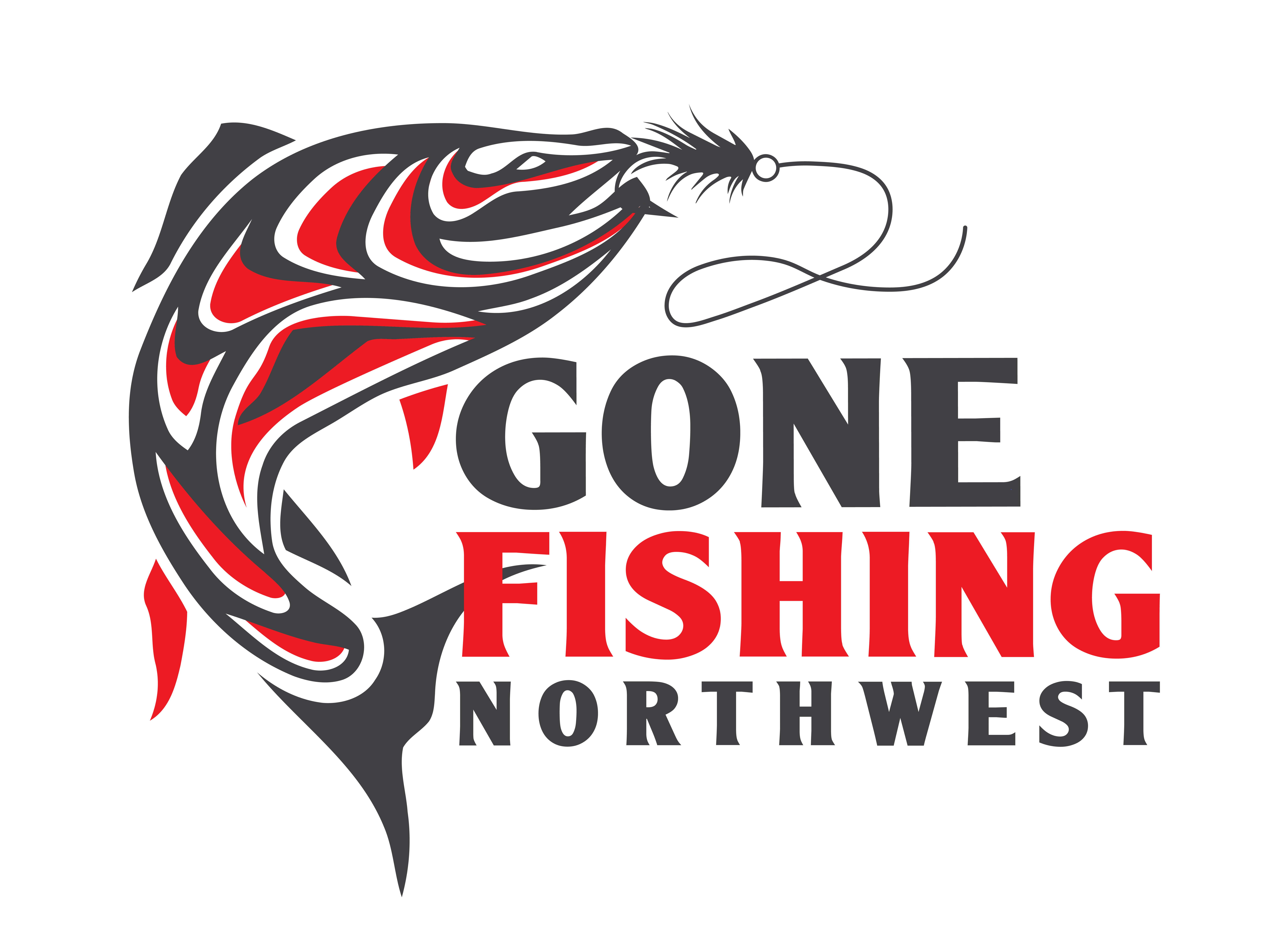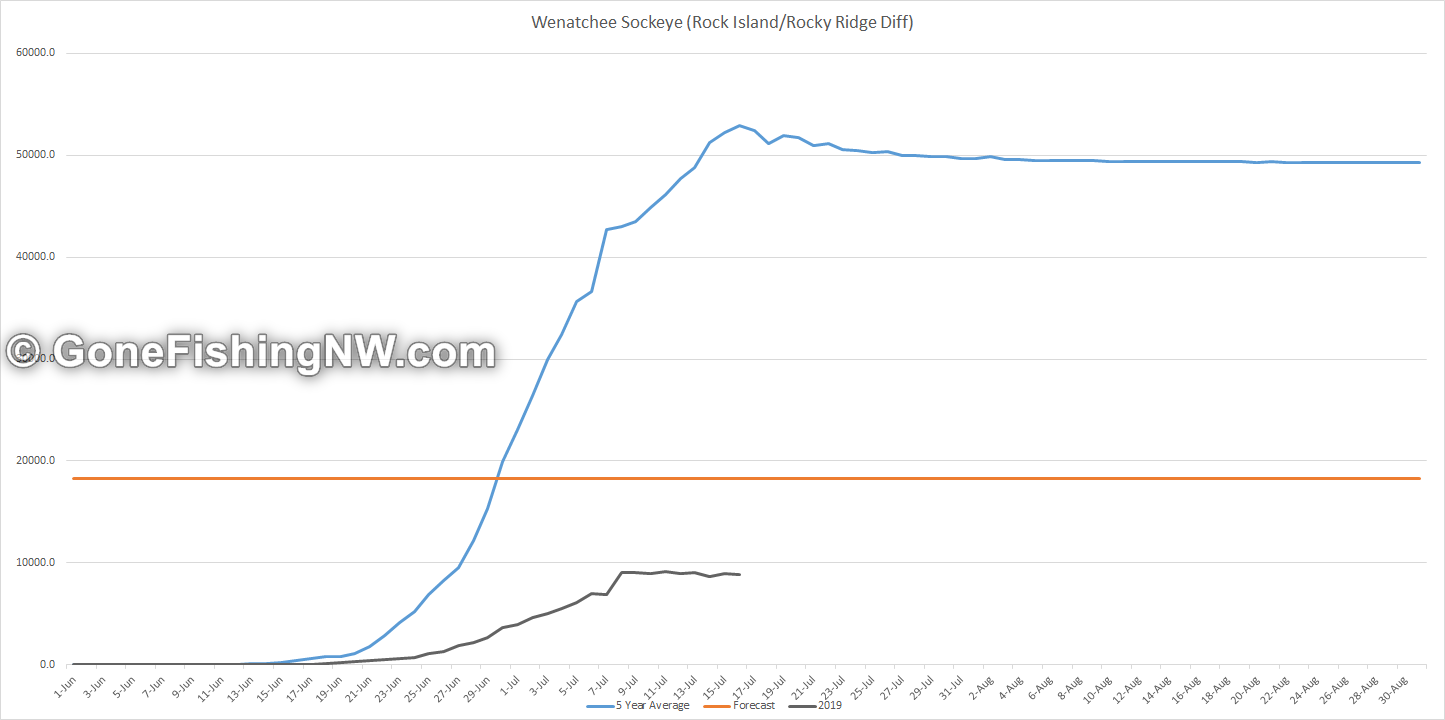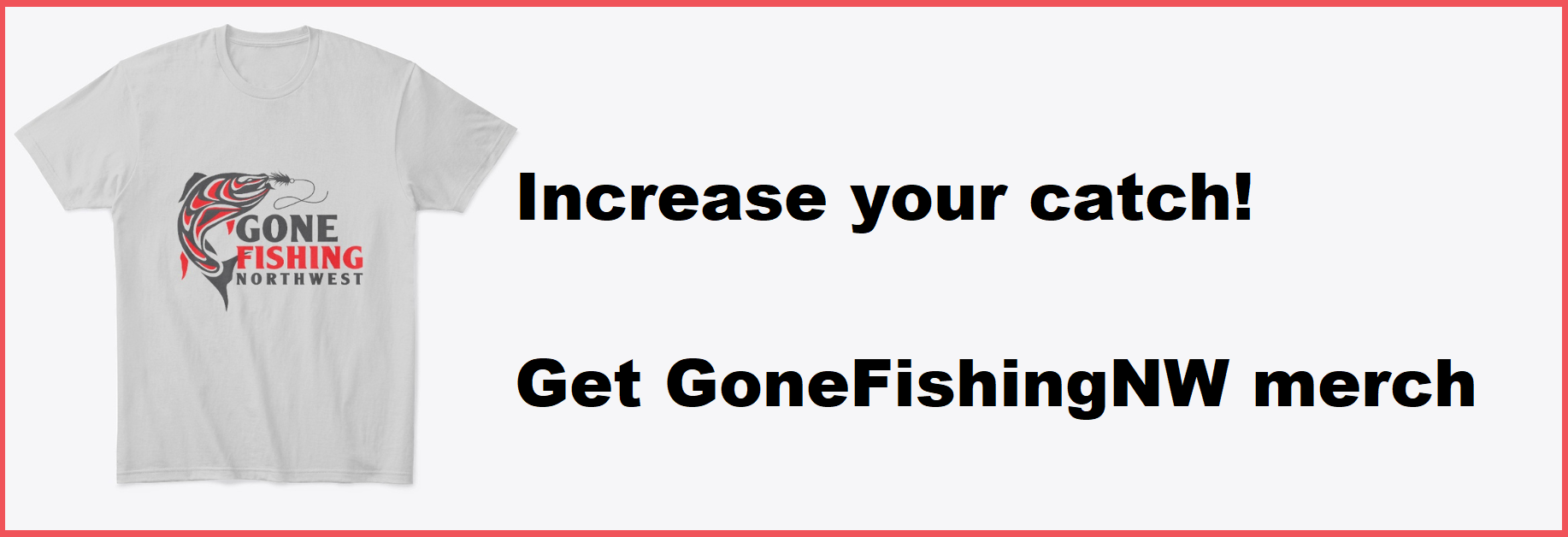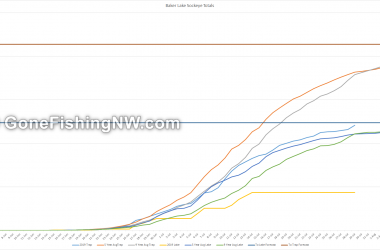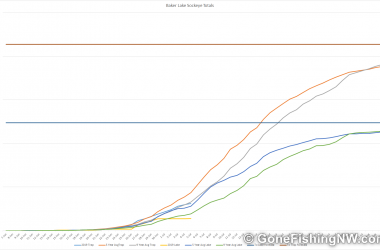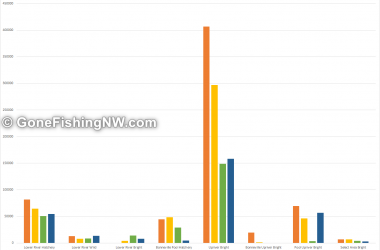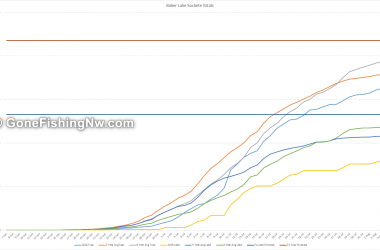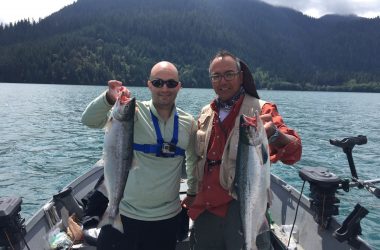Overview
There are 3 main sockeye runs in Washington State currently – Columbia River, Lake Washington and Baker Lake. Each has a location the fish must pass, like a fish ladder, which enables a count to be performed. This gives us a unique view to see how the run in shaping up, without relying on anecdotal evidence like fishing reports.
This article summarizes the data we currently have available in mid-July 2019, the 18th to be exact. Some of the data sources are fairly automated, and updated quickly. Others take several days to update with new data.
Columbia River
The Columbia River run has fish destined for two locations – up the Okanogan River and into Canada, and up the Wenatchee river to Lake Wenatchee. The combined forecast is roughly 92k, with the majority – about 74k – heading forecasted to head up the Okanogan. Since the Wenatchee fish show up a little bit later, most of the ones which have arrived are the Okanogan fish. Its around the 3rd week of July that the Wenatchee fish start splitting off and we can see how that run is going. The Lake Wenatchee forecast is about 18k.
Currently there are roughly 61k sockeye that have gone over Bonneville Dam in the lower Columbia. This makes the Columbia run currently larger than the other two runs combined.
While that sounds like a lot, this is significantly behind the historical averages for the same day of the year. The 5 year average is 340k and 10 year average is 314k fish. Around this time typically about 98% of the fish have reached Bonneville Dam, which means the run is just about over.
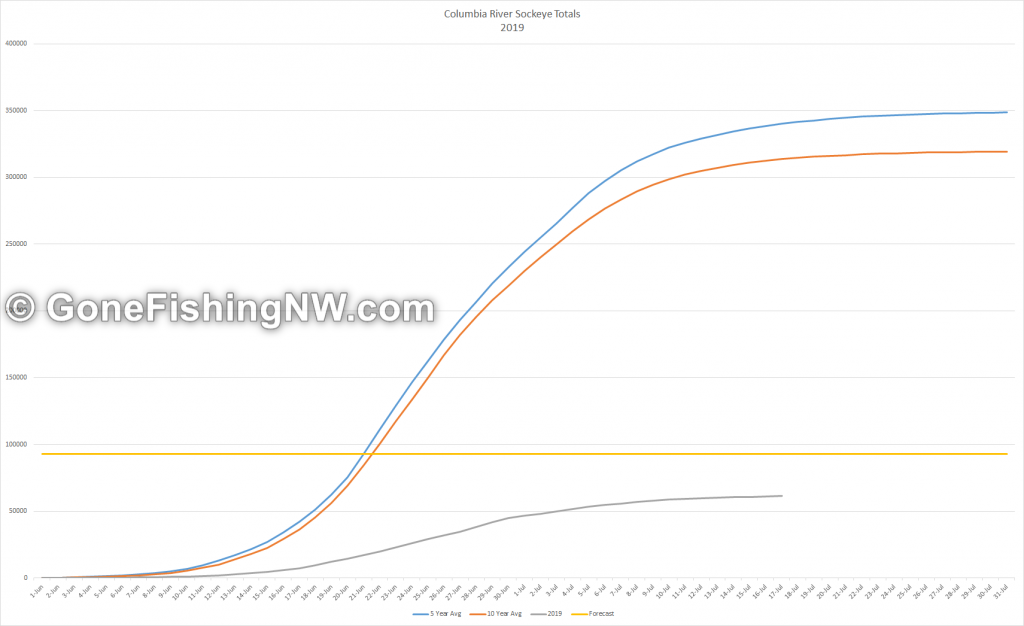
In early July I estimated the complete run would end up around 65k fish – significantly lower than the 92k forecasted. With the updated data, my new prediction is a bit lower, at 63k fish.
We are now far enough in the season to have a good idea of how many fish will wind up at Lake Wenatchee. We can compute that by looking at how many fish have crossed the Rocky Ridge and Rock Island dams – the dams immediately above and below the mouth of the Wenatchee River. By determining the difference, we have a good idea of how many fish might have made the turn to Lake Wenatchee. Right now that difference is about 9k, which is only half the estimate of 18k. Historically by this time the difference between the dam doesn’t change much, so we can expect that 9k number to not change significantly.
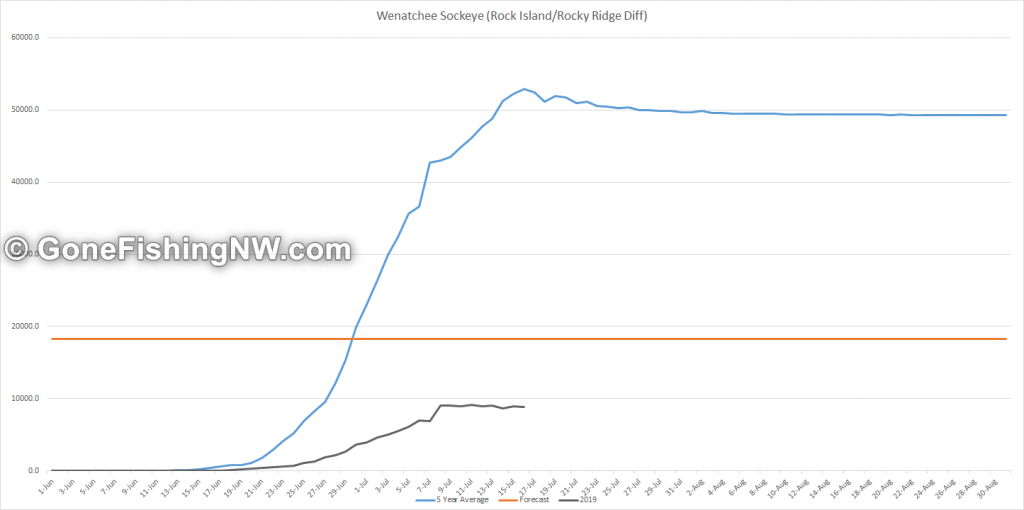
Lake Washington
The Lake Washington fish are primarily headed for the hatchery on the Cedar River, but there is a small amount that naturally spawns in both Lake Washington and Lake Sammamish and their associated tributaries. The forecast this year is a dismal 15k, which is about 20 times smaller than needed to meet the escapement goal for a fishery.
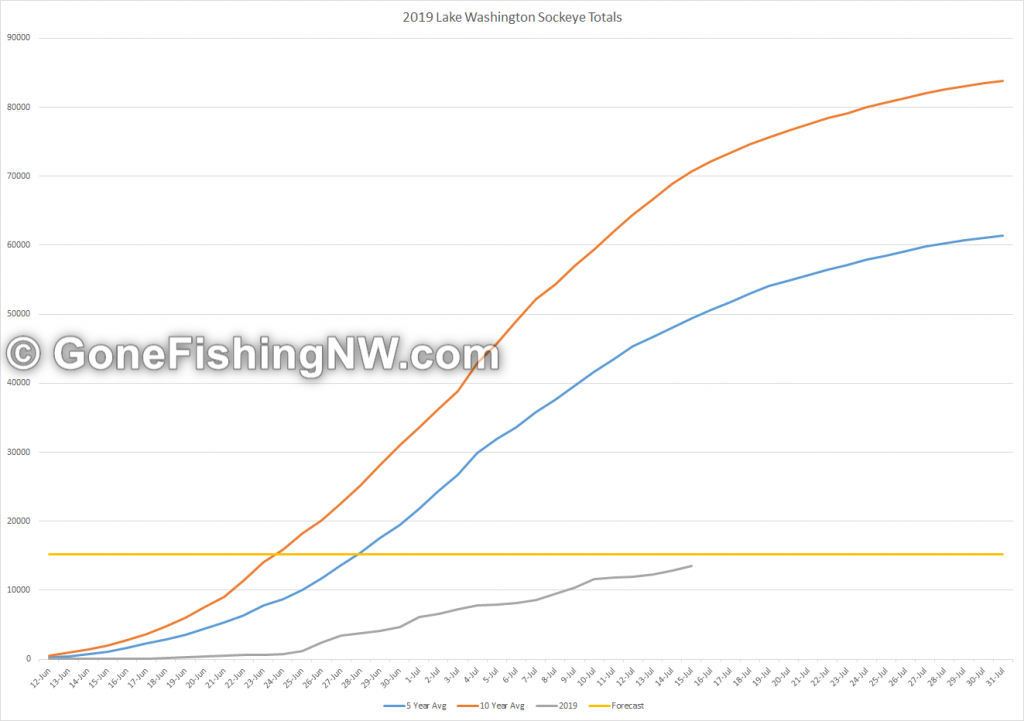
Currently almost 13k fish have shown up. Historically by this date about 80% the fish have arrived, which means this run may come in close to 16k which is slightly above the pre-season forecast of 15k.
Baker Lake
Baker Lake is a very popular fishery, and is often referred to as “Boat Combat Fishing at its Finest.” It is unique compared to the other runs in that tribal netting largely happens first, then the remaining fish reach a trap and then trucked into the lake for the majority of recreational fishing.
How this works is that the pre-season estimate of about 33k is divided into 3 sets. The first set is the hatchery goal, which is 9k. That leaves roughly 24k, which get split 50/50 between the tribal netting and recreational fishing – for about 12k each.
The tribal netting occurs a little bit in salt water near the mouth of the Skagit River, and the majority in the Skagit and Baker Rivers. It mostly happens at the beginning of the run.
The fish that make it past the nets reach the barrier dam, and fish trap. Once trapped the hatchery gets “first choice” of the fish in the trap, until the weekly hatchery goal is met. This week (July 15 – July 21) the hatchery goal is 2441 fish, for a running total of 6352. Any fish left after the hatchery meets its weekly quota are then trucked to the lake.
If you’d like to know more about the process, then check out Baker Lake Sockeye By The Numbers.
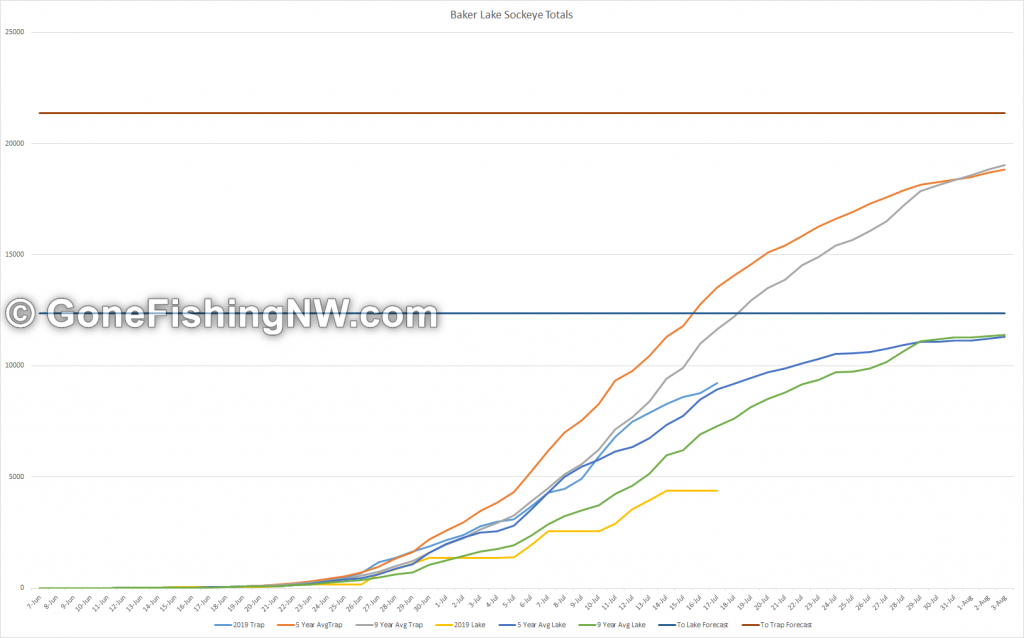
Currently about 9200 fish have reached the trap, which is down from historical numbers for this date – the 5 year average is 13,500 fish and 9 year average is 11,600 fish. Out of those 9200 fish, 4300 have been trucked to the lake vs the 5 year average of 8,900 and 9 year average of 7,200 fish.
Usually at this point roughly 75% of the fish of the total run have made it back. In early July I predicted that only 14k fish would reach the trap and 5k in the lake. Now that we have more data, I’m disappointed to say that things are still on track for that prediction.
While some fishing reports I’ve seen from the lake show that a handful of people are doing alright, but most boats are struggling to get any fish.
Resources
If you want to improve your sockeye fishing game, then make sure to take some time to read about gear and techniques in this guide about sockeye fishing.
If you want to track the numbers for these different runs yourself, then you can find that information at:
Good luck and Tight Lines!
